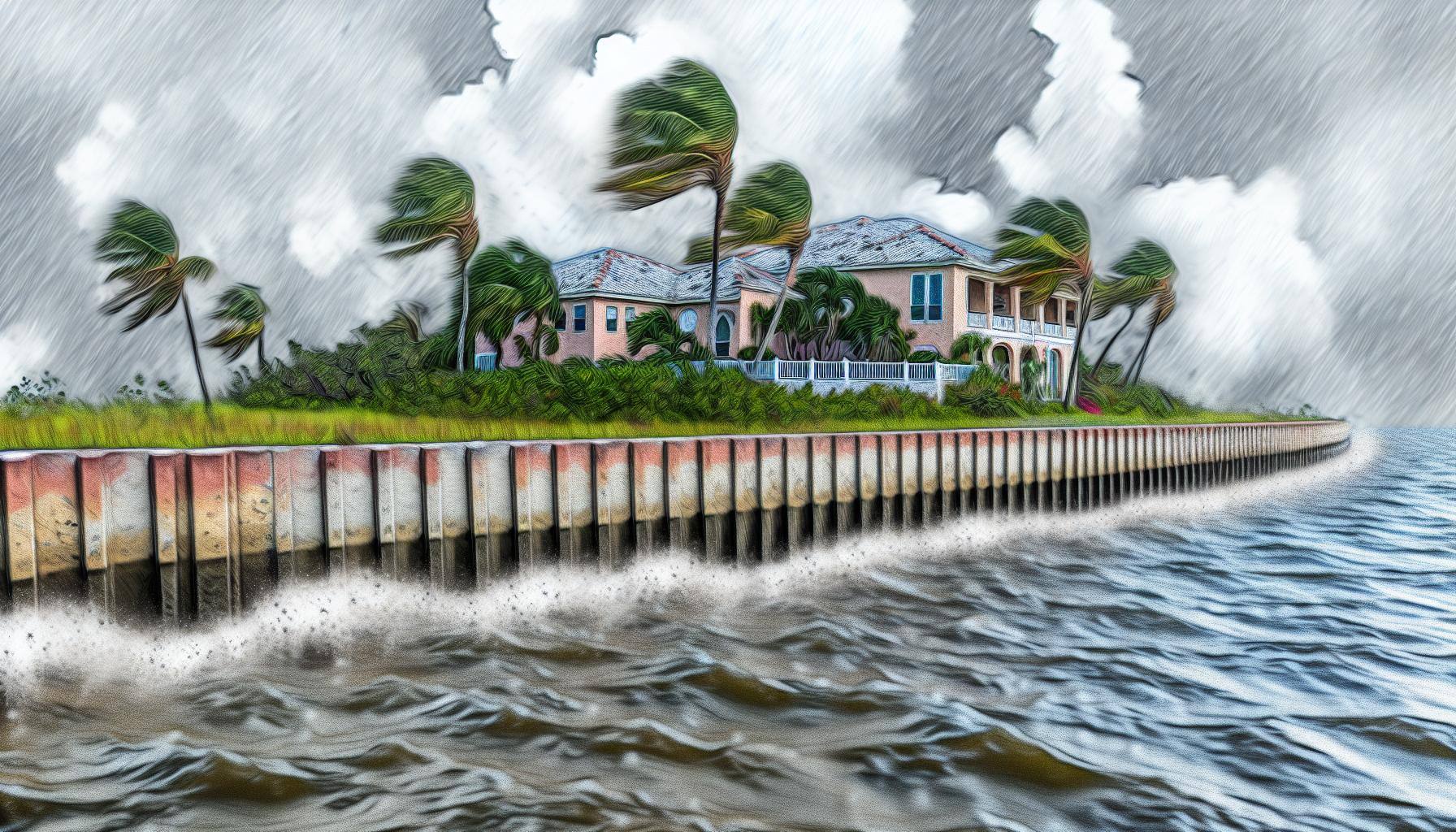For property owners in Southwest Florida, hurricane impact can be more severe as the southern half of the peninsula is more likely to be hit by hurricanes. Add in the fact Florida is affected by storms during the entire span of the hurricane season and it stands to reason that property owners have many reasons to prepare their homes before storms strike.
Related Blog: How to Prepare for Hurricane Season in Florida
Whether you’re a homeowner or business owner, hurricane repairs can come at a steep price. Luckily, there's a way to avoid hurricane damage while saving thousands every year on repair costs.
How Much Does Flood Damage Restoration Cost?
Repair costs after a hurricane are often found in the expected areas. Windows broken by trees and debris, roofs torn off, and water damage from flooding are all common.
Floodwaters can overwhelm sewer and water systems, causing lower-level floods that lead to mold, bacteria, and mildew, which pose significant health risks. On average, flood losses in the U.S. result in $8.2 billion in damages each year. Protecting your property from hurricane and flood damage is crucial to minimize these risks.
Foundation Repair Cost Breakdown
Less common, and more costly, is damage to a structure's foundation. A cracked foundation can destroy a building and are typically caused by force from sustained winds and the washing away of topsoil that protects it.
Foundation repairs can cost anywhere from $2,000 to $7,500, with a national average of $4,500. Avoiding damage to your business or home by being proactive can lessen the blow of out of pocket expenses and high deductibles.
Hurricane Insurance in Florida
While insurance does cover all types of hurricane damages, waterfront property owners must demonstrate proactive risk management to help mitigate these high costs. At over $2,000 a year, the average annual cost of insurance in Florida is one of the highest in the nation. In 2016 alone, hurricane damages cost Florida over $1.5 billion with $824 million in insured losses.
By taking preventative measures to fortifying your home against storms, damaging winds, erosion and rainfall, you may not only lower your premiums but also reduce your insurance deductible. One of the best ways to to minimum risk and get back some peace of mind is by installing a seawall.
Avoid Hurricane Damage & Save Thousands with a Seawall
Repairs for moderate hurricane damage can cost upwards of $10,000 per year! A seawall costs $150 to $600 per linear foot or $15,000 to $60,000 for the average residential project. So even if you pay the max price for your seawall, you’ll break even on hurricane damage savings in 6 years.
When constructed properly and well maintained, a seawall can protect a property for nearly 50 years. Meaning that seawalls could save you over $400k in hurricane damage repairs.
Seawall Repair Costs v.s. Hurricane Repair Costs
When constructed properly and well maintained, a seawall can protect a property for nearly 50 years. However, if seawalls are already eroded, they can fail when hurricanes come through.
Damages and erosion in a seawall will manifest in symptoms such as joint separation, cap breakdown (resulting in panel movement), waterline and berm failure. The consequences of damaged seawalls can also manifest in sloped floors and cracks in floors and windows.
Seawalls Vs. Rock Revetments for Hurricane Protection
In some areas, seawalls perform better than revetments. While both can protect properties against erosion, seawalls have some key advantages over revetment:
- Free-standing: Revetments are limited in their need to be placed under an existing structure. In contrast, seawalls can be placed anywhere between the water and the property.
- Strength: While revetments are designed to absorb the energy of waves, they still allow water through. Seawalls offer more protection to the land behind it by halting the water due to their height and width.
- Cost: Seawalls typically cost more. However, the costs are typically more stable than revetments since those prices are dependent on the availability of materials, shipping costs, and storm damage.
- Stability and Size: Due to their reliance on the stacking of boulders, revetments are more effective at lower levels and can lose stability as levels get higher. Seawalls can vary in height and width depending on the needs of the property. Modifications can be made, as needed, to provide greater stability and reinforcement.
To safeguard your waterfront property against the challenges of hurricane season in Southwest Florida, download Duncan Seawall’s comprehensive hurricane preparedness checklist. This essential guide is crafted with your safety and property protection in mind, offering practical steps and expert advice to ensure you're fully prepared.










